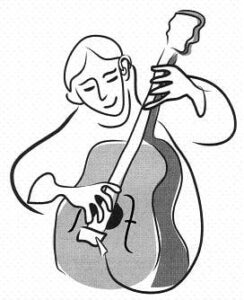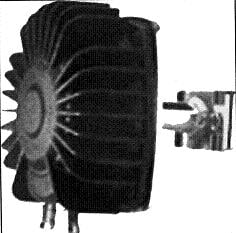Every rocker I have ever met (and I go back to the 60s) says that rock and roll needs to be loud. They are absolutely correct. To truly enjoy rock music one needs to involve all parts of the brain that respond to the visceral rush of loud music- this ranges from the Amygdala, to the Cerebellum, from the hypo-campus to the transverse temporal gyrus…. enough about neuroanatomy.
Rock and roll needs to be loud, but does not need to be intense. The volume control is set according to the loudness but its the intensity (in decibels) that defines whether the music is potentially damaging. How can we “delude” or fool the musician into thinking that something is loud, but at a lower intensity level? Simply telling a musician to turn down the volume will undoubtedly involve a demonstration involving of their middle fingers, but if we agree with them that loud is cool, but lets do it safely, the middle finger will come down. Deluding a musician may sound awful and unethical, but if our goal is to get them to play at a safe level using basic audiology tools, then we’ve done a good day’s work.
We know that prolonged exposure to 85 dBA can cause hearing loss. Its actually quite astounding how quiet 85 dBA really is. The dial tone of a telephone is about 85 dBA; your MP3 player on 1/2 volume (depending on the earphone used) can be about 85 dBA; and flushing the toilet (with your head in the bowl) is also about 85 dBA. Nobody would consider this to be loud, even though it is intense.
There are three “tricks” that can be used to assist our deluding of the musician- (1) increase their ability to monitor; (2) increase the bass response; and (3) increase the vibro-tactile response. Each will cause the musician to think that the music is loud, but at a lower intensity level.
(1) Increased ability to monitor: In ear monitors look like hearing aids, smell like hearing aids, but are not quite hearing aids. They have an amplifier, and a loud speaker/receiver, and some even have an (in situ) microphone. Instead of the musician using floor or wedge monitors at their feet, in ear monitors can be used to bring the mix of all musical instruments directly to the musician at a sound level that is less than what would be the case with wedge floor monitors. The musicians should still be counseled to keep the volume turned down a bit but with proper counseling this can result in a 6 dB intensity reduction- that is, their potential damage from loud music has been cut to 1/4 of what it would have been using the old style wedge floor monitors.
These are electronic monitors that are essentially custom made hearing aid transduction devices. There are also acoustic/passive techniques to improve monitoring. The schematic below is courtesy of the Musicians’ Clinics of Canada (www.musiciansclinics.com).

Using 4 feet of #13 hearing aid tubing a "stethoscope-like" acoustic monitor can be made so the bass instruments can better hear themselves.
This $10 “trick” is very easy to construct. Using a paper clip to join the tubing to the tail piece of the bass or cello (as shown) or even tape it to the body of the instrument will allow the musician to hear up to 20 dB of low frequency amplification. Since the bass and cello have better monitoring, they don’t need to play as intensely for the same perception of loudness.
(2) Increase the bass response: This is something that everyone can try in their car. Simply turn up the bass and adjust the volume for comfort. You will find that the volume knob is lower (again up to about 6 dB lower). This is especially useful for dance and aerobics classes where the participants only need to hear the low frequency rhythm and “thumping”. Maxing out the bass (and turning down the volume) is quite well accepted by the participants and not only will you be physically fit (from the aerobics) but you will have less risk to your hearing.
(3) Increase the vibro-tactile response: Extending the bass response even lower, we get into the tactile region. Drummers and bass players need to “feel” the music as well as “hear” it. Of the many strategies out there, the use of Shakers, which are ultra-low frequency speakers, can be very useful. These are either bolted to the seat of the drummer or placed on the floor, bolted to a 3/4″ thick piece of plywood, in the area of the bass player. Shown below (courtesy of Sensaphonics.com) these loudspeakers are connected to the main amplification system and as the name suggests, vibrates the musician every time there is very low frequency energy within the band pass of the Shaker.

Shakers are ultra-low frequency loudspeakers either bolted to the drummer's seat or placed on the floor near the drummer and bass player. (Photo courtesy of Sensaphonics)






